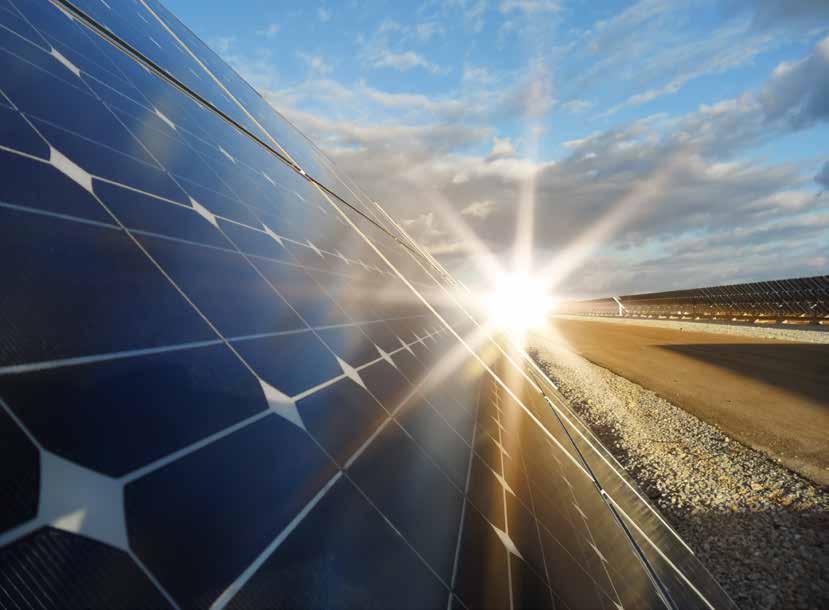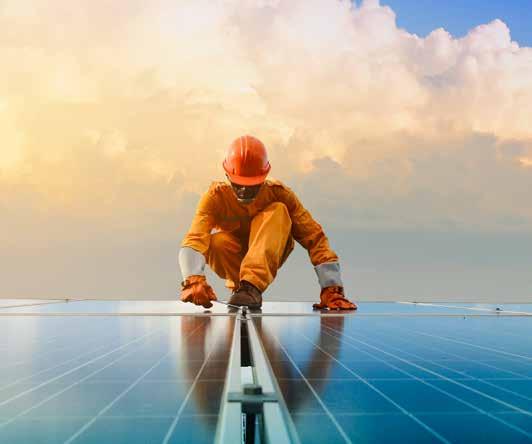
4 minute read
RECYCLING
from ReSource May 2020
by 3S Media
Solar panel recycling: not a dark art after all
By some predictions, the year 2050 will see 15% of the world’s energy being produced by photovoltaic (PV) cells. While solar panels have a life of several decades, it becomes increasingly important to consider reuse and recycling options as time passes.
Advertisement
By Dr Mark Williams-Wynn*
he uptake of PV technology is T being driven by the demand for clean energy tied with the reduced capital and operational costs of the technology.
At present, between 90% and 95% of solar panels use silicon-based PV cells that convert sunlight into electricity. Other solar panels use thin films of cadmium telluride or copper indium gallium selenide to convert the sunlight to electricity. These chemicals are highly toxic and make the management of these types of panels extremely hazardous. While silicon-based and thin-film PV are currently the only widespread technologies, there are also several nextgeneration technologies that will likely become more widely used by 2050.
The average solar panel has a life expectancy of between 20 and 50 years, meaning that panels installed today will only become waste 20 to 50 years into the future. However, the predicted exponential increase in the number of solar panels that reach end-of-life (EOL) will require efficient and cost-effective waste management strategies.
The 2014 amendment to the National Environmental Management: Waste Act (No. 59 of 2008) bans all waste electronic and electrical equipment from landfill as of 23 August 2021. This includes all solar panels. South Africa is yet to see demand for solar panel recycling, but the implementation of the ban together with more solar panels reaching EOL will result in increasing demand for solutions.
The life of a solar panel
PV cells degrade slowly over time, resulting in decreases in efficiency. The EOL of a panel is often reached because the efficiency of the panel drops below a certain threshold, but other than this, the panel continues to function. For large commercial applications, the panels must be replaced when the efficiency drops to a certain level. However, the panels can continue to produce electricity for many more years, albeit at reduced outputs.
Strategies for reusing these panels in lessdemanding applications should be developed. Examples of such applications include the electrification of rural areas and schools. These panels could be sold, donated or leased. A major concern with this strategy is ensuring that the panels are managed sustainably when they no longer function. For this reason, leasing may be a better option, as ownership will be maintained by the supplier. The income from leasing panels could be used to cover the EOL recycling costs.
Apart from efficiency issues, other solar panels are considered waste due to superficial or partial damages. Many of these can be repaired and can enter the used market. At present, there is no second-hand market for solar panels, and the creation of such a market may assist in reducing the amount of waste produced, while increasing the availability of PV technology. However, in a similar manner to the reuse of lower-efficiency solar panels, thought needs to be given to how the solar panels are recovered for recycling once they are no longer functional.
Recycling options
A solar panel consists of the PV cells housed within a plastic, glass and metal structure. Up to 96% of the mass of a solar panel (predominantly the structure of the panel) can be recycled within South Africa. It would, therefore, be prudent to locally recycle as much of the materials from the solar panels as possible, as this will create jobs, ensure that materials remain within South Africa and reduce shipping costs.
As the volumes of solar panels that require recycling increase over time, it may become feasible to begin processing the PV cells themselves in South Africa. However, the current low volumes render this option infeasible.
The biggest challenge with dismantling solar panels is the separation of the silicon wafers from the glass protective layer under which they are glued. This can be done either through thermal treatment, chemical treatment or mechanical treatment. The value of the separated silicon is

dependent upon the treatment technique used. Undamaged wafers obtained through thermal or chemical treatment have a higher value than those separated by mechanical means. However, the mechanical processes are often cheaper and faster.

Creating a recycling market
Despite such a large fraction of a solar panel being recyclable, the recycling of solar panels costs more than can be recovered by selling the recycled materials, due to their low value. Thus, the challenge in encouraging the recycling of PV technology boils down to the questions of who will fund it, and how these will funds be managed.
Regardless of where on the value chain this cost is included, it will always be the case that the end user will bear the cost of recycling. However, the location at which this cost is added can play an important role in ensuring that the available finances are used responsibly and correctly.
To encourage the recycling of solar panels in South Africa will require cooperation between all players in the industry, including manufacturers, installers, users and recyclers. Without the recycling of solar panels, solar power is not so green after all – but with an efficient waste management system, we can ensure green energy for the future of South Africa.
*Dr Mark Williams-Wynn is a research engineer at the University of KwaZulu-Natal’s School of Engineering.










